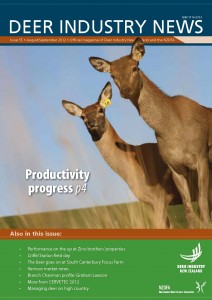 Last Tuesday, AFFCO’s Imlay plant in Whanganui was the first to be allowed to introduce meat inspection by its own employees. Till then this function has been performed exclusively by government employed meat inspectors, originally employed by MAF, subsequently by the state-owned-enterprise AsureQuality, writes Allan Barber.
Last Tuesday, AFFCO’s Imlay plant in Whanganui was the first to be allowed to introduce meat inspection by its own employees. Till then this function has been performed exclusively by government employed meat inspectors, originally employed by MAF, subsequently by the state-owned-enterprise AsureQuality, writes Allan Barber.
The proposal to allow meat companies to have a hand in meat inspection finally saw light of day about two years ago, although the companies have been dissatisfied with the government monopoly for many years. I can remember the issue raising its head in the early 1990s when the meat inspectors went on strike because of pay and conditions.
AFFCO, for whom I worked at the time, had its production disrupted by a group of employees on its plants, employed by a different employer on different terms from its own workforce and belonging to a different union, the Public Service Association (PSA). Not surprisingly, AFFCO was unhappy at this state of affairs.
But 20 years later, after negotiations and discussions with MAF, then the Ministry for Primary Industries (MPI) and a trial at Imlay, overseas regulatory authorities (notably USDA and EU) have approved the equivalence of the proposed inspection procedure.
There will still be at least two AsureQuality food safety assessors monitoring each shift and final oversight of the product remains the responsibility of the MPI Verification vets on the plant. The most significant difference will be in the total number of employees, because on all plants there have been up to 12 meat inspectors and supervisors across a two shift operation.
In future, meat workers on the chain will be responsible for their own inspection, supervised by official inspectors who must be trained to the same level and subject to the same performance checks as AsureQuality’s inspectors. There will be considerable savings from the new system which the PSA argues will place an undue emphasis on production at the expense of food safety.
MPI released the proposed Post Mortem Inspection regulations for cattle, sheep and goats and asked for submissions by 13 July this year. The response, from what I assume was the PSA, raised several concerns about the risks to New Zealand’s reputation for safe food which the current inspection model had guaranteed for more than three decades. MPI’s replies to the objections indicated its satisfaction with the proposed process which overseas authorities had already approved.
In its submission, the PSA also stated its willingness to discuss opportunities for more flexibility and productivity gains. This all sounds constructive, until one realises the meat companies have been trying for at least 20 years to do just that without success.
A further four meat plants – Alliance Smithfield, Silver Fern Farms Pareora, Riverlands Blenheim and AFFCO Manawatu – will adopt the new company meat inspection procedure by the end of January 2013. At this point, a review will be conducted before approval for a rollout across the industry over the next two seasons.
Kelvan Smith, AsureQuality’s group manager operations, says that the SOE accepts what is happening is inevitable, but wants to make sure it has a clear understanding of the industry’s timetable for the change. His main concern is to manage the impact on employees of what is likely to be a 50 percent reduction in staff numbers by the end of the process.
It is possible that not all meat processors will want to change from the present system, especially if they have a good working relationship with the meat inspectors working at their plants. However, cost pressures make this unlikely, if the new arrangements work well. The PSA and its affected members will be keeping their fingers crossed.









